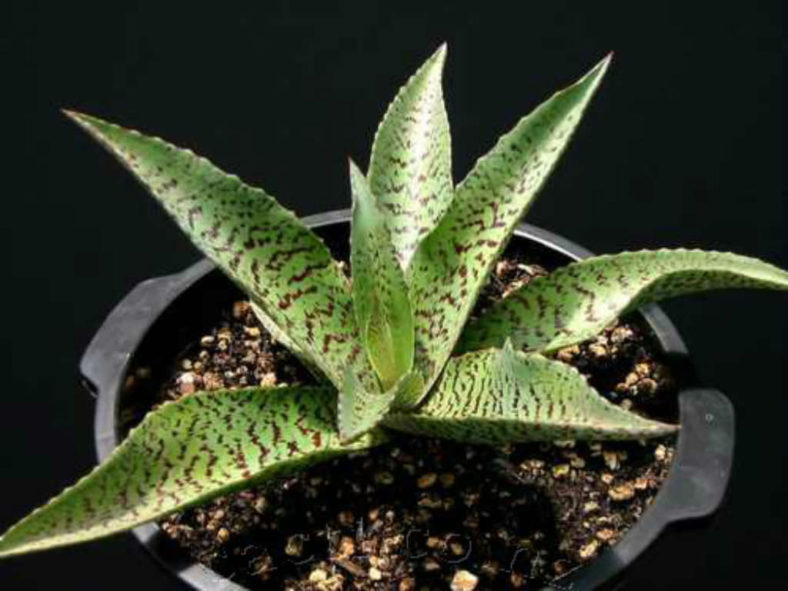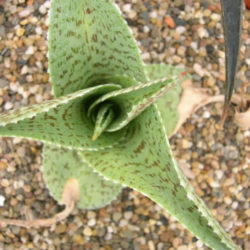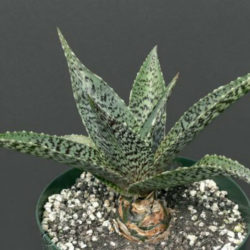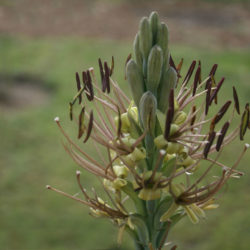Scientific Name
Manfreda variegata (Jacobi) Rose
Common Name(s)
Mottled Tuberose, Texas Tuberose
Synonym(s)
Agave variegata, Manfreda tamazunchalensis, Manfreda xilitlensis, Polianthes variegata
Scientific Classification
Family: Asparagaceae
Subfamily: Agavoideae
Genus: Manfreda
Description
Manfreda variegata is a succulent plant that forms tufts of arching sword-shaped leaves with a few teeth along the margins. The leaves are V-shaped in cross-section or deeply furrowed, occasionally brown or green blotched, and up to 18 inches (45 cm) long. In late spring, numerous darkly colored spidery flowers appear on up to 5 feet (1.5 m) tall flower spikes.

Hardiness
USDA hardiness zone 7a to 10b: from 0 °F (−17.8 °C) to 40 °F (+4.4 °C).
How to Grow and Care
Manfreda is a tender perennial or "temperennial" succulent plant that grows best in full sun. Plant in well-drained, dry to average soil in containers just slightly wider than the width of the rosette or plant directly in the ground. Since the plant has a quite large root system, the container should be at least 12 inches (30 cm) deep. Manfreda is a slower grower, so it will not quickly overtake the space allotted in the landscape.
When the plants are actively growing in summer, they appreciate a bit of supplemental watering and half-strength fertilizer. During the winter months, the plants should be allowed to dry and stored in a cold room at 48°F (9° C). Plants are watered only enough to keep the foliage from shriveling.
Manfredas are propagated by the removal of offsets and from fresh seed. Fresh seeds germinate in 7- 21 days at 68 to 72 °F (19 to 22 °C).
See more at How to Grow and Care for Manfreda.
Origin
This species is native to Mexico.
Hybrids
Links
- Back to genus Manfreda
- Succupedia: Browse succulents by Scientific Name, Common Name, Genus, Family, USDA Hardiness Zone, Origin, or cacti by Genus



